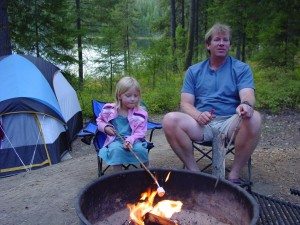 Before kids we were adventurous campers. We camped while backpacking, rafting, sea kayaking, and even skiing. Rarely, if ever, did we go car camping. In fact, we wondered why anyone would pack the car and head to a campground full of other people. But now that we have kids, we know better. It’s fun, affordable, relaxing, and great for the kids. Camping with children, however, takes a bit of work and some practice to do well. Fall is the perfect time! The number of both bugs and people is greatly reduced. Here’s some our favorite tips for a fun and successful camping trip.
Before kids we were adventurous campers. We camped while backpacking, rafting, sea kayaking, and even skiing. Rarely, if ever, did we go car camping. In fact, we wondered why anyone would pack the car and head to a campground full of other people. But now that we have kids, we know better. It’s fun, affordable, relaxing, and great for the kids. Camping with children, however, takes a bit of work and some practice to do well. Fall is the perfect time! The number of both bugs and people is greatly reduced. Here’s some our favorite tips for a fun and successful camping trip.
What to bring?
Don’t bring anything you don’t want to get wet or dirty. This really should go without saying. Living outside means living in the dirt. Kids crawl in it – even the teens will eventually crawl in it. Camping and trying to stay clean is like walking a tightrope, and it looks miserable. Plan for dirt, sand, mud, water, pine needles, bad weather, and bugs. Camping is not a high fashion activity – even for teens. But be flexible. If your child will only wear dresses, by all means bring a dress that can get dirty. When one of our daughters was three, she began refusing to go hiking. We finally figured out that she simply didn’t want to wear dirty, ugly clothes. So we picked up a cheap black velvet “hiking dress” and we were back in business.
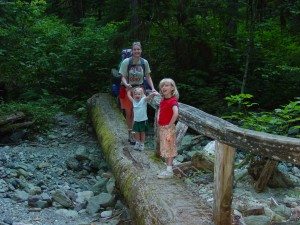 Prepare a set of camping boxes with essentials. Running around the house trying to remember and track down all the stuff you’ll need, such as tin foil, bug dope, candles, and a plastic tablecloth, will make you tired before you even head out the door. If you plan to go camping more than once, buy camping-specific stuff and keep it in big plastic storage boxes. These big storage tubs can easily be found at the hardware store. The boxes keep everything stored all in one place and they’re easy to load into the car. We don’t like to use disposable plates, so we keep tin plates and old silverware in our boxes. You can find some great buys at garage sales and thrift shops. Actually we have two boxes; one for kitchen stuff and another full of stuff we frequently need, such as a wisk broom, rope, fire starter, and a handful of glow sticks. It’s important to be able to clean the tent floor, hang stuff up to dry, start a campfire quickly in the rain, and keep kids happily busy after dark.
Prepare a set of camping boxes with essentials. Running around the house trying to remember and track down all the stuff you’ll need, such as tin foil, bug dope, candles, and a plastic tablecloth, will make you tired before you even head out the door. If you plan to go camping more than once, buy camping-specific stuff and keep it in big plastic storage boxes. These big storage tubs can easily be found at the hardware store. The boxes keep everything stored all in one place and they’re easy to load into the car. We don’t like to use disposable plates, so we keep tin plates and old silverware in our boxes. You can find some great buys at garage sales and thrift shops. Actually we have two boxes; one for kitchen stuff and another full of stuff we frequently need, such as a wisk broom, rope, fire starter, and a handful of glow sticks. It’s important to be able to clean the tent floor, hang stuff up to dry, start a campfire quickly in the rain, and keep kids happily busy after dark.
Where to go?
Reserve campsites ahead of time for multi-family trips and on busy summer weekends. It’s a little easier to be spontaneous in the fall but spontaneity does come with risks. Many campgrounds can be reserved ahead of time. Sites in the National Forests can be reserved through www.reserveamerica.com. You can also find options here for renting old cabins, fire lookouts, yurts, and all sorts of fun, cheap, alternative lodging that extends the camping season. We rented the American River Guard Station last October. We could hike all day on Mt. Rainier and play games in a warm cabin during the long, cool nights. Reserve campsites in Wilderness Areas and in National Parks through www.recreation.gov. Also check your state park website for camping options. There may even be county parks with on-line or phone-in reservation systems. For RVs, try www.campusa.com.
Head to the natural wonders listed in the Gazetteer. We’ve had dozens of great and unexpected adventures by consulting the great book of maps. We read aloud the natural wonders nearby, vote on the most interesting, and then explore the nearby campgrounds. Sometimes it’s a cave, sometimes a waterfall, a volcanic lava flow, a flat mesa or some other unusual feature. They’re not all amazing but the list is a great place to start if you’re looking for an adventure that’s a little off the beaten path.
Fly over first. Give your kids the big picture using the simulated flyover function in Google Earth. It shows the mountains you’ll cross or the destination you plan to hike to. Explore the campground possibilities and even pick your favorite site. You can also fly up dirt roads to find out if there are dispersed camping options, or measure the distance of your hike.
Avoid edgy campsites. I love rivers and I love sleeping next to roaring rapids. But we didn’t camp anywhere near whitewater, cliffs, busy roads, or other dangers when the kids were little. The whole point is for parents to relax and the kids to have a chance to wander a little further than they can at home. We strongly discourage you from choosing a campsite where danger is only a few steps away.
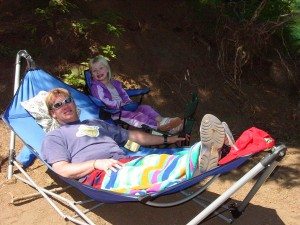
What to do?
I think most of us can figure out about opening up a camping chair, cracking a beer, and watching a sunset. That’s easy. And, in our experience, the kids entertain themselves pretty well. What follows are a few of our favorite ideas for making camping even more fun for kids of all ages.
Let the world be your sandbox. Bring empty plastic pails whether or not you are going to the beach.
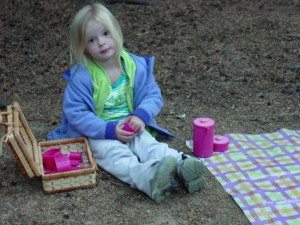
Let your kids fill the buckets with rocks, pinecones, seedpods, or anything else they find around the campsite. They can sort, pile, build, or count. They can even make “tea”. Bring a plastic tea set and enjoy dirt or pine needle pretend tea parties. As the kids get older, they can sketch, collect, and press leaves and flowers. Or they can decorate by building rock cairns everywhere. Water coloring large rocks can also be a lot of fun. Leave them where the rain will wash them clean.
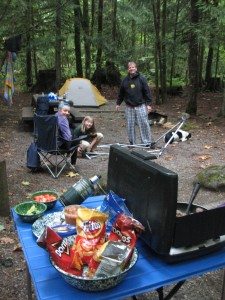
Eat fun food. Why roast marshmallows when you can roast Peeps (sugar coated, shaped, marshmallow candies)? They’re not exactly healthy but neither are marshmallows. Teens and pre-teens might even think melting peeps is pretty cool.
Experiment with a Dutch oven. Use your breakfast coals to start roasting pork in a hole in the ground. Add vegetables at lunch and by dinner you’ve got a delicious feast. And for dessert? Let them eat cake! Scoop out an orange peel and eat the fruit inside. Fill the empty orange peel 2/3 full with chocolate cake batter and cook over the fire. Delicious! We’ve also recently discovered the oh-so-healthy “camping taco” pictured at left. Recipe? Everything you would normally put on a taco but dumped into a bag full of crumbled Fritos or Doritos. Delish!
Creekside entertainment. Lots of campgrounds have little creeks and these can be sources of endless entertainment. One of our favorite pastimes is to whittle little boats out of sticks. Using the awl on most pocket knives you can drill a spot for the mast.
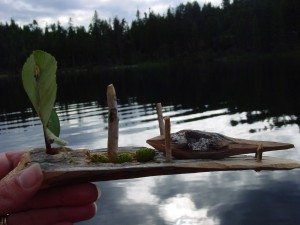 Connect a leaf sail onto a twig mast, plug it into the hole and, voila, a masterpiece. Race the sailboats down the creek or tether them with long blades of grass in a small pool. The famous game of Pooh Sticks never gets old – throw two sticks upstream of a bridge and then guess which one will float under the bridge first. On smaller creeks, just figuring out where you can throw a stick that will actually make progress downstream is plenty of fun. Turn over rocks and search for aquatic insects. Most are simply juvenile forms of flying insects but they have exotic shapes and nifty underwater adaptations.
Connect a leaf sail onto a twig mast, plug it into the hole and, voila, a masterpiece. Race the sailboats down the creek or tether them with long blades of grass in a small pool. The famous game of Pooh Sticks never gets old – throw two sticks upstream of a bridge and then guess which one will float under the bridge first. On smaller creeks, just figuring out where you can throw a stick that will actually make progress downstream is plenty of fun. Turn over rocks and search for aquatic insects. Most are simply juvenile forms of flying insects but they have exotic shapes and nifty underwater adaptations.
Make the most of the dark. Give all the kids a cheap cyalume light stick after dinner and a piece of string to swing it in wide arcs. Cyalume light products are also sold as bracelets, necklaces, and even eyeglasses or drinking straws. Fancy light sticks are fun but they aren’t really necessary because there is no end to the things you can do with a flashlight on a dark evening. Use funny hand shapes to project animals on a hanging sheet, shine it up at your face to make spooky faces, or play flashlight tag. Make paper flashlight covers with cut-out shapes for the flashlight and project anything on the tent or tree. We always camped with a projection ViewMaster when the kids were little and we used it to show “movies” projected on the tent walls. Now that the kids are older, we get out the SmartPhone constellation app and use it to identify all the constellations we can see (and even those we can’t see).
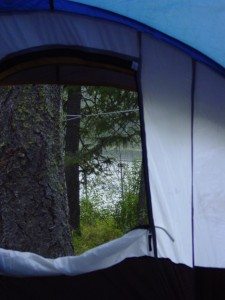 More and more research is showing us that kids need to interact with nature for their health and happiness. “Last Child in the Woods” by Richard Louv, for example, links the lack of nature in children’s lives today with the rises in obesity, attention disorders, and depression. So book your plane tickets, explore other cultures, and visit faraway places but don’t forget to travel to the outdoors too. Get dirty, see something beautiful, let your kids collect pinecones, and spend some family time around a campfire.
More and more research is showing us that kids need to interact with nature for their health and happiness. “Last Child in the Woods” by Richard Louv, for example, links the lack of nature in children’s lives today with the rises in obesity, attention disorders, and depression. So book your plane tickets, explore other cultures, and visit faraway places but don’t forget to travel to the outdoors too. Get dirty, see something beautiful, let your kids collect pinecones, and spend some family time around a campfire.

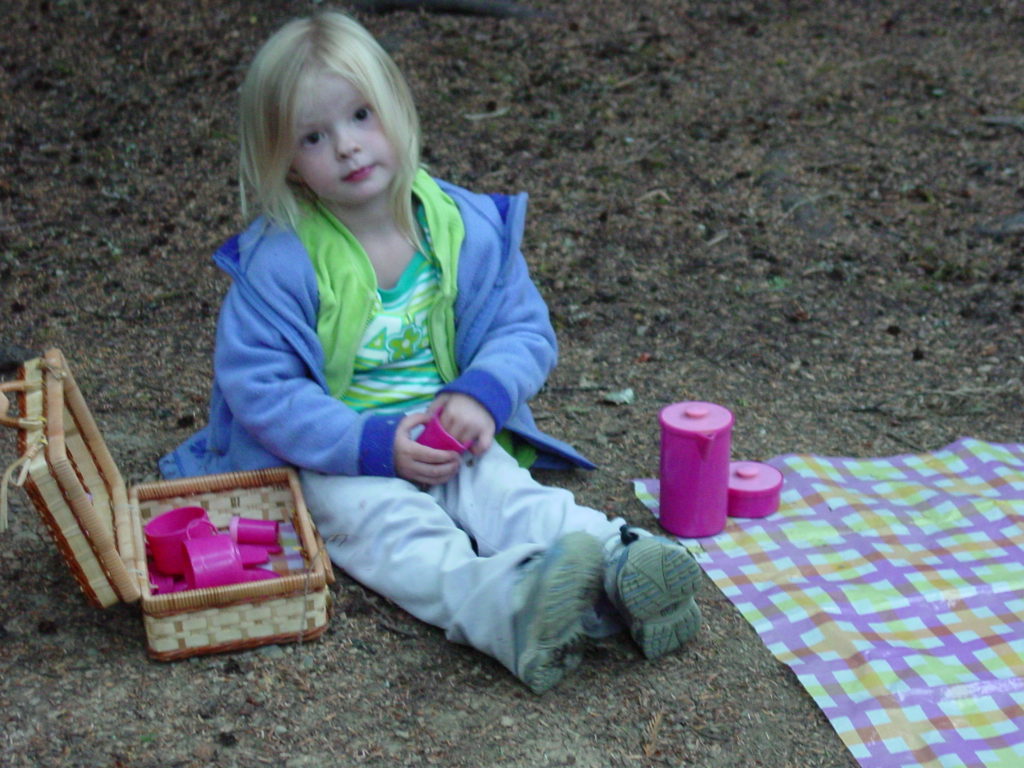
Well, we know what to do for the fall holidays! Just have to figure out where to go in Belgium now…
Oh I wish I were in Belgium to go camping with you! I’m trying to squeeze in one last backpacking overnight this weekend – between soccer, sleepover parties, karate, homework, music lessons. It’s pretty silly but I’m going to try!